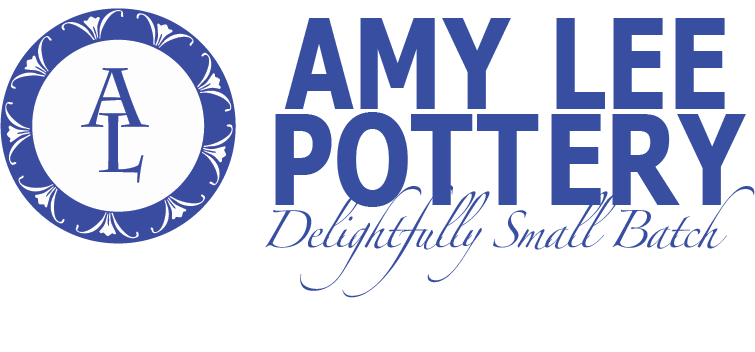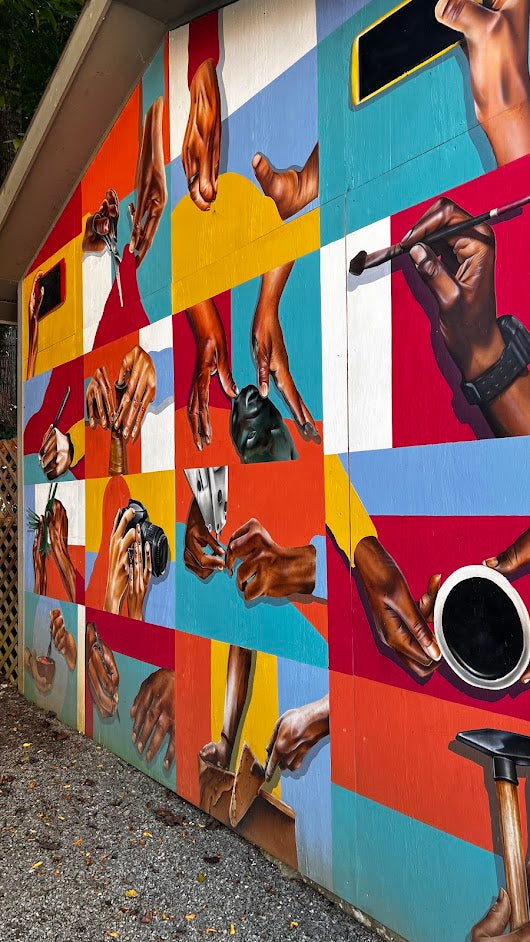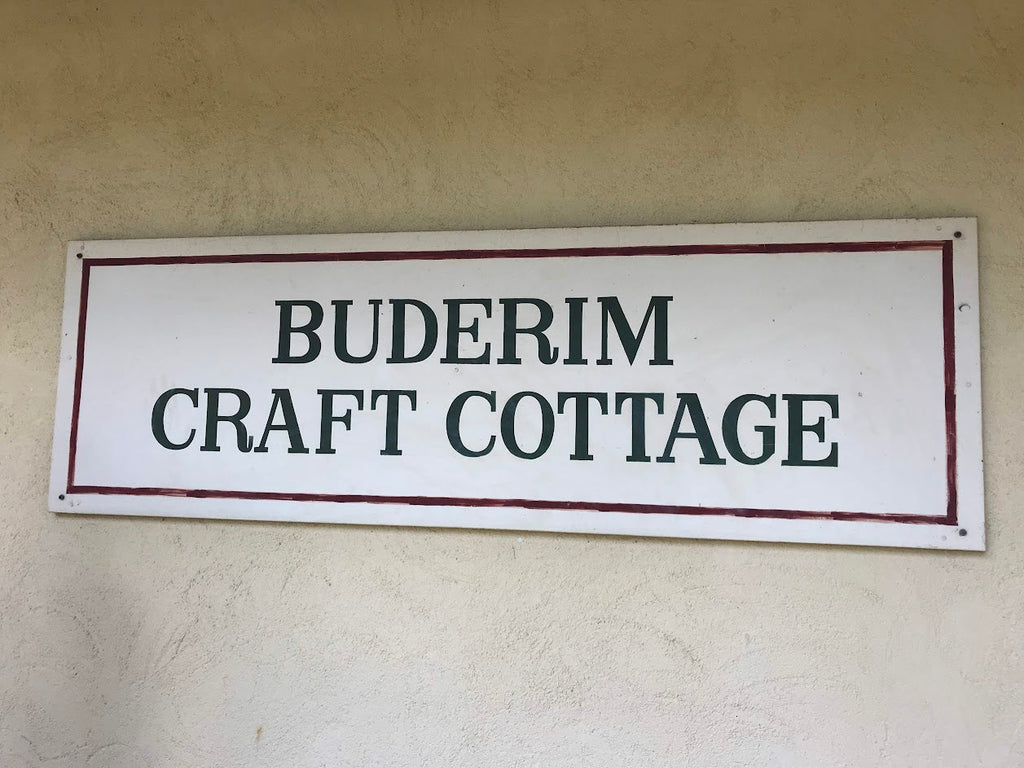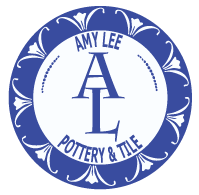Getting Started With Paper Clay
I've known about Paper Clay for a while, but I was never quite as enthused about it until after meeting Graham Hay. His site, and he as an artist are an encyclopedia of all things Paper Clay! If you have not already done so, you can read a brief history of the beginnings of the Paper Clay movement in my previous blog post. It has not really been around for that long considering the history of clay (just since the late 1980's) You can also read a little longer history from Graham Hay's NCECA 2007 paper presentation.
 "Critical Mass" by Graham Hay - In progress!
"Critical Mass" by Graham Hay - In progress!
Come along and join me on this experiment with paper clay!
1. Paper Clay (aka paper clay) vs. Paperclay (aka paperclay) in recent products and marketing (generally) - Often you will see two different ways paper clay is expressed: as two words or as one. For the purpose of this blog, I'm talking mainly about the 'Fireable' variety: "Paper Clay" - two words.
"Paper clay" and "paperclay" are typically not the same thing. It has become a general convention (particularly with US suppliers) to use the 'two-word' version: "paper clay" to describe a clay + paper pulp (or other combustible material) that is fired in a ceramic kiln to clay vitrification temperatures whereby the process involves burning off the combustible addition in the process. "Paperclay" on the other-hand refers to a clay substance (could still be a mined mineral-based clay base, but could be polymer-based as well) with added fiber content from sources like paper pulp, nylon, wood fiber, linen, flax, etc. that is typically not fired to high temperatures. Both paper clay and paperclay will have astounding dry-form strength. In my understanding the term chosen boils down to whether you let it dry naturally (paperclay) vs. fire-it in a kiln (paper clay). Paperclay is often sealed or hardened with something that acts on the surface layers of the piece to add longevity. Paper clay once finished has no combustible fiber content remaining.
Some examples of the air-dry paperclay that are not fired in a kiln; usually are air-dry only (often used for kids crafts and some jewelry-making applications like electroforming) include:

(FYI - This is not the stuff I'll be using!)
See below for the fireable versions of paper clay this blog is about and how I chose those I desire to experiment with.
2. Why Paper Clay?
Advantages: It's strong - very strong when dry. Joins are doable dry to wet clay. It's lighter weight when dry. Workable like regular pottery/ceramic clay. It can dry very fast without warping. Shapes that typically would not withstand the ceramic clay drying process are achievable. Minor warping, little to no cracking, lower shrinkage than base clay body when fiber (paper pulp, wood pulp, nylon fiber) is added. Typically lighter-weight when fired. You don't have to worry about hot dry climate use. It can be made from your favorite clay body simply with the addition of fiber content. Typically (in US) reduces the per pound price of porcelaneous clay bodies. It is great for sculptural shapes that are difficult to achieve with traditional pottery clays.
Disadvantages: It is not typically easy to throw on the potter's wheel or will slump on creation. Some feel it is 'stickier' than traditional clay. If made with natural fibers and no preservatives, it will mold and eventually stink. Stoneware versions cost a little bit more per pound when manufactured (in US typically). Smoke and/or vapors need to be strongly considered when kiln firing for health hazards (although this is true for all firings, it becomes more evident with paper clay). In the US - there are not a lot of manufacturers who make paper clay, so obtaining paper clay may be more difficult and/or more costly with added shipping costs if not making your own.
3. What can I do that would make me a paper clay believer? Check out these fantastic resources with examples of works made with paper clay:
- Particle & Wave: Paper Clay Illuminated Virtual Tour.
- Graham Hay's Gallery.
- Carol Farrow's Remaining Work.
- TerrePapier.com Gallery.
- Rosette Gault's Gallery.
- Mimi Logothetis Porcelain.
- Tomoko Konno.
- Valeria Nascimento.
4. I'm ready - point me to the clay!
- I created this list for the US - depending on where you are located, there are several manufactured clay options.
- Make your own! Add 1 pound of dry clay to 1 pound of water and make a slip, place about 1/4 of a roll of toilet paper into a bucket of water until it breaks down, sieve the paper fibers and mix with the slip, pour slip on a surface for drying and wedge it. Watch Graham Hay's how-to videos too!
-
Some examples of paper clays that are fired in a kiln available in the USA are compiled in a list I made. This list is ever evolving. The paper clays I am most interested in trying include:
- Aardvark's Nara 5 Porcelain Paper Clay
- Clay Art's Oregon Red Mid-Range Paper Clay
- Clay Art's Mid-Range English Grolleg Porcelain Paper Clay
- Laguna's Bob's Paper Clay WC 952
- SiO2's Cellulain Porcelain Paper Clay
-
I want a paper clay that will be fireable within my normal firing ranges.
-
I also want a paper clay that will be translucent when thin.
-
For me, absorption is also important.
The applications I'm desiring to use paper clay with involve identifying manufactured sources of paper clay that are reasonably priced, have a chance at passing my functional absorption test desires, and would be something that I would be okay with allowing to exist in the out-of-doors through freeze-thaw cycles without the fear of cracking, flaking, or slaking.
5. I want to expand my knowledge more via books - point me to some good books and other resources (some are hard to find)!
- Working with Paperclay and Other Additives - by Anne Lightwood
- Paper Clay - by Rosette Gault 1st Edition
- Paper Clay - by Rosette Gault 2nd Edition
- Paperclay: Art & Practice - by Rosette Gault
- Additions to Clay Bodies - by Kathleen Standen
- Paperclay - The Perfect Union - By Astrid Sanger & Otakar Silva
- Paper Clay for Ceramic Sculptors: Studio Companion - by Rosette Gault (original edition - hard to find!)
- Paper Clay for Ceramic Sculptors: Studio Companion - by Rosette Gault (newest version)
6. How about some online resources? These are my favorites so far:
- Inspirations from my Paper Clay Pinterest Board
- TerrePapier.com
- PaperClayArt.com
- GrahamHay.com.au
- JerryBennett.net
7. Videos are my favorite!
-
Playlist with lots to watch!
(Please like and follow my YouTube channel while there to encourage me to do more things like this!)
Thanks for reading! Hope you enjoy! More to come in this experiment with paper clay journey in a future blog post!
--Amy






Comments (4)
Thanks for this article. I’m trying to learn all I can on paper clay .
I have already some cone 10 clay but I’m only going to come 5 with it due to slumping. I’d like to make fish sculptures but unsure how to proceed with the armature because of I can’t fire aluminum in kiln.so I needed the information in your article.
Thanks Bill G
I am wondering about the fumes when firing paper clay. What did you experience? Is it about the same as stoneware fumes.
Thank you for all this information. I may have missed it, but is this food safe after firing and glazing?
Thank you for this!! So helpful.